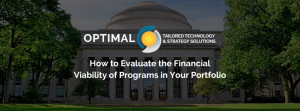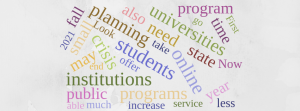Challenges to the viability of the US higher education model have grown significantly during the last 5 years. Demographic change especially in the Northeast and the upper Midwest has resulted in enrollment declines that pose serious challenges to the viability of many small private and regional state-supported institutions. The price of obtaining a college degree along with mounting educational debt has caused many potential students and their parents to question the value of an undergraduate degree.
A Lesson for Higher Ed from Industry—Smaller is Better, and More Sustainable
As educators, we often think of the flow of learning as from us outwards—to our students, to practitioners, etc. While this is no doubt often the case, it is not always so. Sometimes there are important lessons for us that emanate from our students and the world of practice. Two articles illustrating this point jumped out at us in last week’s business news.
Partnership, Merger, and Acquisition Are Not Dirty Words
This past month, another New England college announced it was closing at the end of the academic year. The announcement came as a great surprise to most people. The only external indication that the college was in trouble was an announcement about fall enrollment made a few weeks before the closing announcement. It apparently came as a surprise to most faculty, staff, and students who had been assured all along that the college was in good shape. All publicly available evidence suggests this closure was not a decision resulting from thoughtful strategic planning. It emerged suddenly, seemingly out of thin air.
Dynamic Modeling for Higher Education Planning
Thoughtful planning has never been more critical for higher education institutions. The COVID-19 crisis coupled with the already difficult enrollment and financial challenges facing higher education is leading many institutions to engage in a deeper and more far-reaching planning exercise than has been the case for many years. Institutions must take a deep look at their strategies, plans, and programs, and must consider significant changes, not just minor adjustments (Planning and Budgeting Post COVID-19).
Effective Strategic Planning in a Time of Crisis
Early this year, we at Optimal Campus began thinking about posting a series of blogs focused on what many perceived as a crisis in higher education. Shifting demographics of potential students, rising costs, challenges to the value of higher education, and academic inertia placed higher education at a crossroads. Many were arguing, and we agreed, that, without fundamental changes, the current system of higher education in the United States would be unable to survive. And then COVID-19 happened!




